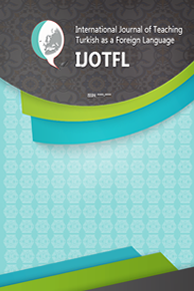
Uluslararası Yabancı Dil Olarak Türkçe Öğretimi Dergisi
Yazarlar: Düriye GÖKÇEBAĞ
Konular:Dil Bilim
Anahtar Kelimeler:Teaching Turkish as a Foreign Language,Error Analysis,Teaching Turkish as a foreign Language to Greek speakers,Functional Linguistic
Özet: The In 20th century, the developments in linguistic movements affected the field of teaching foreign languages as well. As a result of these developments, instead of Contrastive Analysis which was used until 1970s, the Error Analysis had started being used as an effective method which is applied very often for foreign language teaching. The supporter of the Error Analysis, Corder (1974) states that the errors of students are very important to be used as data which will provide feedback not only for students but also for teachers. Thus, the errors should not be considered as a negative element but as an opportunity for evaluation of the learning progress of the students. The errors that occur during the language learning process are very important for the Functional Linguistic (André Martinet) which focuses on the functions of the language and examines the effects on the communication. Students’ errors demonstrate whether the students understood well the structure of the target language or not. Delen Karaağaç (2006) emphasizes that Error Analysis is a method that verifies the functions of the target language. The aim of this study is to focus on the errors of the Greek speakers who are learning Turkish as a foreign language in B1 and B2 levels. During the usage of “Sıfat Fiil” (Parasynthemes), errors had been found out and had been analysed by the Error Analysis based on the Functional Linguistic. The errors are classified in two main categories, Morphological Errors and Syntactic-Semantic Errors. The results of the Error Analysis are shown in charts with percentages. According to the results of this study, it’s shown that the Greek speakers have difficulties specifically during the usage of “Sıfat Fiil” (Parasynthemes). The data analyses results show that, during the usage of “Sıfat Fiil” (Parasynthemes)16.63 % errors are indicated in B1 level and % 12.75 in B2 level. In conclusion of the study, pedagogical suggestions are made to reduce the mistakes during the learning process and improve the teaching practice of Turkish as a foreign language.